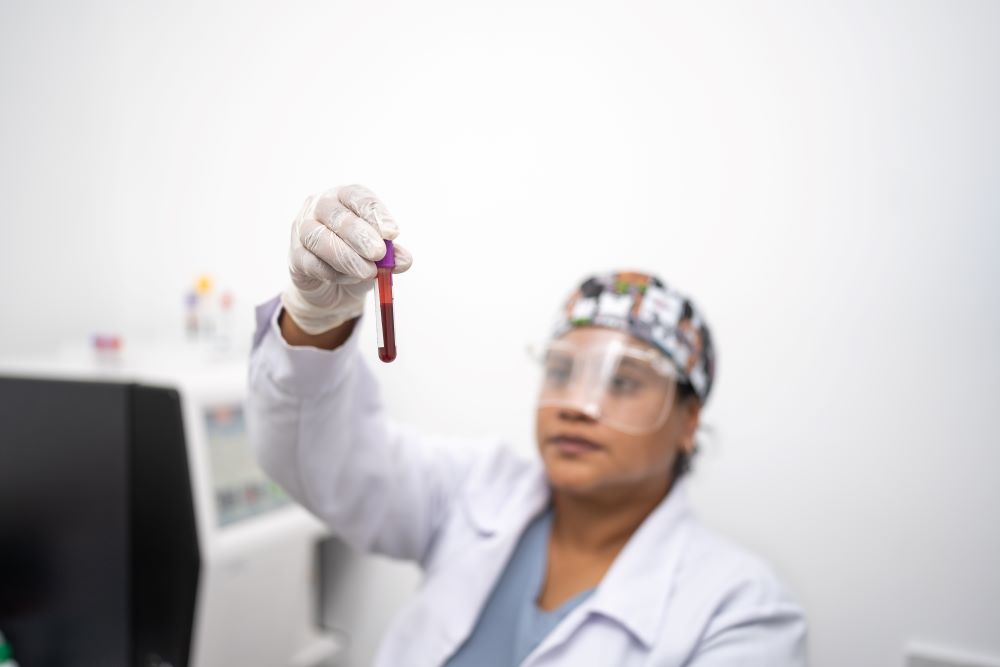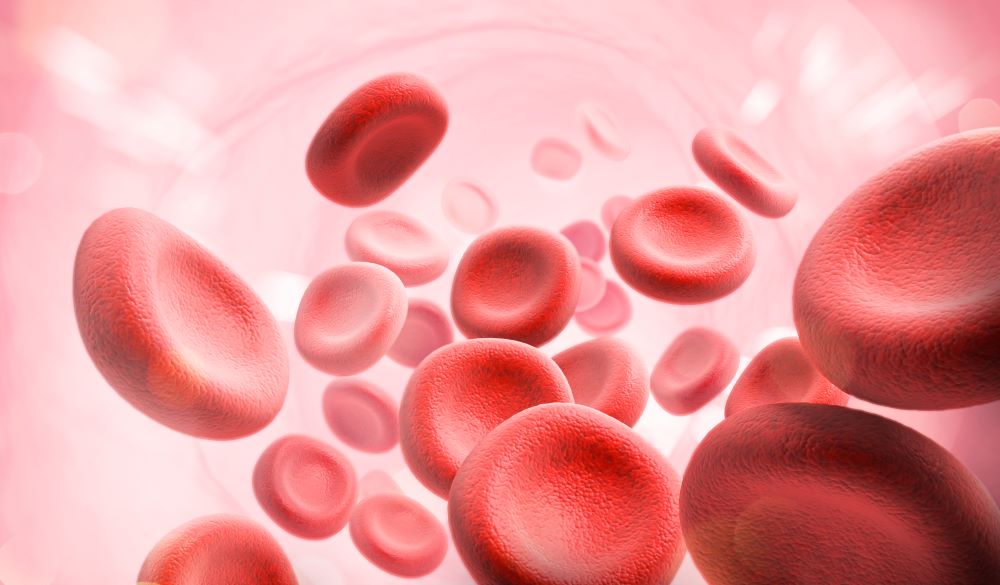What is RDW (Red Cell Distribution Width) in a Blood Test?

Doctors often suggest patients take a Red Cell Distribution Width test or RDW test to identify the size and volume of their red blood cells (RBCs) or erythrocytes. RBCs are essential for carrying oxygen from the lungs to other body parts. Hence, doctors might need to know about the current status of erythrocytes in your body to treat you better.
Do you wish to find out more about RDW in a blood test? Then, keep reading this article to get a complete guide.

Table of Contents

What Is RDW in a Blood Test?

The human body comprises numerous red blood cells of various shapes and sizes. Generally, these are disk-shaped, with a 6.2 to 8.2 micrometres diameter. A haemoglobin protein binds these cells with oxygen, carrying it across various tissues. If you face issues with your haemoglobin, they can negatively influence the flow of oxygen and the size, shape, and health of red blood cells. This can cause multiple health issues.
Thus, the meaning of RDW in a blood test is associated with identifying the details of the volume and size of red blood cells. It helps doctors analyse the current conditions of these cells and take precautions to avoid health issues that it might cause.
Why Is the RDW Count Needed?
The RDW test is mainly conducted for anaemic patients, as a low RBC count fails to carry adequate oxygen through the blood. Doctors can pronounce a patient as anaemic after evaluating their current RBC count. In other cases, doctors suggest the RDW test as a part of a Complete Blood Count (CBC) test. This test measures various body parts, including the blood cells. It helps to diagnose the following health issues.
- Heart diseases
- Diabetes
- Liver diseases
- Cancer
- Thalassemia
- Weakness and fatigue
- Dizziness
- Family history of blood-related disorders
- Pale skin
- Chronic diseases (diabetes, HIV, or Crohn’s disease)
- Diet with low vitamin B12, iron, etc.
- Significant blood loss due to an injury
When Should I Get the RDW Test?
For many reasons, a physician may ask for a red cell distribution width (RDW) test, which is usually a part of a complete blood count (CBC) for different purposes:
- Normal Blood Tests: These are an element of feature health check-ups or complete blood count (FBC) for all-around well-being monitoring.
- Signs: Consult your physician for possible RDW tests if you experience any signs like fatigue, dizziness, weakness, shortness of breath or pale skin.
- Chronic Illness: To help diagnose or monitor chronic illnesses such as anaemia and other blood disorders.
- Treatment: Particularly in red blood cell production-related conditions, how well treatments work can be evaluated.
In conclusion, an RDW test is used to measure the variation in the size of red blood cells, which helps identify potential RBC-related health problems.
What is the Procedure for the RDW Test?
The RDW test is a simple blood examination usually done as part of a complete blood count (CBC). In this procedure, a medical professional will use a needle to take some small amount of your blood, mainly through your arm veins. These tests are referred to the laboratory for testing and obtaining results on RDW.
This test will determine the variation in the size of red blood cells. It is an easy and routine procedure that usually takes only a few minutes and does not require special preparation.
How Should You Prepare for the RDW Test?

Preparing for the RDW test is simple as it is part of a routine blood test requiring minimal preparation. Unless your healthcare provider advises otherwise, you can eat and drink normally before the test.
Nevertheless, ensure that you let your doctor know of any medications, supplements or health issues that you have since they may alter your results. If you are having RDW done as part of a full blood panel, your doctor might ask you to fast for some time.
Mostly, it’s not hard to prepare with its simplicity, thus making it convenient for most people with normal body checkups.
How to Measure RDW Count in Blood Test?
Now that you know what RDW in a blood test is, you must be curious about its procedure. Patients hardly have to undertake any preparation for taking only the RDW test. However, they might need to fast if there are other tests along with the RDW test. The process includes drawing blood samples from the patients.
The healthcare professionals then send the sample to their laboratories to analyse the RBC count. After collecting the details from the lab test, doctors divide the standard deviation (SD) of the mean corpuscular volume (MCV) by the MCV and multiply the result by 100 (RDW-SD)/(MCV)×100). It helps them to gain an understanding of the percentage value RBC size heterogeneity in the body.
How to Read Results of RDW in a Blood Test?
To understand the findings from an RDW test, one looks at the RDW value, which indicates how much red blood cell sizes vary. A greater degree of anaemia or other diseases can lead to higher values, indicating more differences in cell size among other vitamin deficiencies. A typical result means that most of your red cells are about the same size; this is healthy RBCs.
It is very important to consider the RDW value and how it relates to other blood tests, like haemoglobin or mean corpuscular volume (MCV) when interpreting RDW test results. The results of RDW are usually expressed in percentage terms with a normal range of between 11.5% and 14.5%.
What Is a Normal RDW Count Range?
Now, you must be curious to know the normal range of RDW in a blood test. Most people consider an RDW count of 12%-15% normal and healthy. This percentage represents the amount of RBC count in the given blood sample. If your result displays this percentage, you are under no threat of having a blood-related disorder. However, you might need other medical tests to prove it further.
Here's a table with the parameters for the normal range of RDW based on age
Symptoms of High RDW

When RDW is high, it reflects variability in the size of red blood cells, which may be linked to various health conditions and indicates a possibility of potential issues like anaemia or nutritional deficiencies.
What Does It Mean If Your RDW Count Is High?
If your blood test generated RDW count is higher than 15%, it means your RDW count is high.
Many reasons can be responsible for causing a high RDW count, such as high alcohol consumption. In addition, having a high RDW count can indicate developing the following conditions.
- Hereditary spherocytosis
- Chronic liver disease
- Kidney disease
- Valvular disease
- Stroke
- Colorectal cancer
Therefore, if you have a high RDW count, it is advisable to consult doctors and start further medical tests and treatments immediately.
What are the Causes of High RDW?
If your blood test-generated RDW count is higher than 15%, it means your RDW count is high. The following types of anaemia can cause a high RDW count.
Symptoms of Low RDW
Low red cell distribution width in the blood doesn't directly cause problems, but related conditions can impact your health. Here are a few symptoms of low RDW:
What Does It Mean If Your RDW Count Is Low?
If your RDW is lower than 12%, it indicates a low RDW count. The meaning of low RDW blood test count usually refers to a normal situation. It means that your RBCs or red blood cells are uniform in size and shape. In such cases, these cells are likely to perform well for your body and reduce the chances of developing any blood-related disorders.
Thus, as you can see, RDW in a blood test can be essential to understanding the condition and functions of RBCs in the human body. However, high RDW means these cells are not uniform, resulting in future complications. Thus, if your RDW count is higher than normal, take proper consultations with the healthcare professionals and avoid future diseases.
What are the Causes of Low RDW?
Low RDW levels indicate that red blood cells are of similar size. This can be connected with various health problems. The following are common causes of low RDW:
Thus, as you can see, RDW in a blood test can be essential to understanding the condition and functions of RBCs in the human body. However, high RDW means these cells are not uniform, resulting in future complications. Thus, if your RDW count is higher than normal, take proper consultations with healthcare professionals and avoid future diseases.
What Steps to Take When RDW in Blood Test Is High or Low?
Red Cell Distribution Width Test (RDW) measures the variation in the size of your red blood cells. Abnormal RDW levels, either too high or too low, can indicate underlying health conditions like anemia, nutrient deficiencies or chronic diseases. Here’s what you can do:
- Determine the Underlying Cause: A high or low RDW level could be linked to conditions such as iron deficiency anemia, vitamin B12 or folate deficiency or liver disease. Consulting a doctor for further tests can help identify the root cause.
- Maintain a Balanced Diet: If RDW is high, include iron-rich foods, B12 sources and folic acid-rich foods to support red blood cell production. If RDW is low, ensure you’re consuming enough essential nutrients, staying hydrated, and addressing any underlying health conditions.
- Avoid Alcohol & Unhealthy Habits: Limit alcohol intake and reduce processed foods as excessive consumption can lead to nutrient deficiencies affecting red blood cell health.
- Follow Medical Guidance: Depending on the cause, your doctor may recommend iron or vitamin supplements, dietary changes, or treatments to correct any underlying disorder.
- Secure Your Health with Insurance: Maintaining optimal RDW levels is crucial for overall well-being. A health insurance plan can provide financial security for medical treatments, including anemia management, chronic disease care, and hospitalisation.
Protect What Matters - Explore Other Insurance Options














